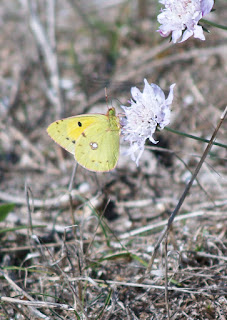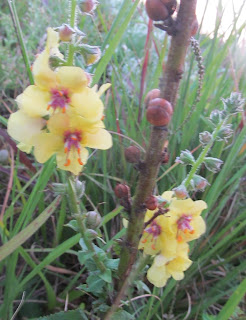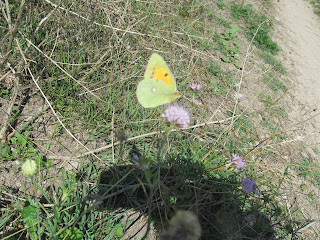The revelation of Volkswagen's cunning ploy to falsify the emissions under test from their diesel cars in the USA, raises lots of issues (http://www.theguardian.com/business/2015/sep/22/volkswagen-scandal-q-and-a-emissions-scandal). The one that is most concerning to me is the fact that as techno-fixes can be developed, are adopted by the management (?) and are then, apparently used 'successfully' for a period of time (to gild the lily and enhance sales), suggests that countries (as well as large companies) might well be tempted to come up with schemes to limit their need to take actions on harmful emissions. If this is so, how can anyone really have confidence that people are carrying out their undertakings or legal obligations with respect to the environment?
This blog may help people explore some of the 'hidden' issues involved in certain media treatments of environmental and scientific issues. Using personal digital images, it's also intended to emphasise seasonal (and other) changes in natural history of the Swansea (South Wales) area. The material should help participants in field-based modules and people generally interested in the natural world. The views are wholly those of the author.
Tuesday, 22 September 2015
The VW Case and the Environment
The revelation of Volkswagen's cunning ploy to falsify the emissions under test from their diesel cars in the USA, raises lots of issues (http://www.theguardian.com/business/2015/sep/22/volkswagen-scandal-q-and-a-emissions-scandal). The one that is most concerning to me is the fact that as techno-fixes can be developed, are adopted by the management (?) and are then, apparently used 'successfully' for a period of time (to gild the lily and enhance sales), suggests that countries (as well as large companies) might well be tempted to come up with schemes to limit their need to take actions on harmful emissions. If this is so, how can anyone really have confidence that people are carrying out their undertakings or legal obligations with respect to the environment?
Saturday, 19 September 2015
Wednesday, 16 September 2015
How Much Can the Seas Take?
A report by the WWF has suggested that stocks of tuna and mackerel in the seas have recently declined by 74% (http://www.theguardian.com/environment/2015/sep/15/tuna-and-mackerel-populations-suffer-catastrophic-74-decline-research-shows). Many other marine species, including Leatherback turtles and Sea cucumbers, are also in apparently terminal decline. Over-fishing is part of the problem but pollution also plays a role. We really need to manage what we do to the seas more effectively but that is going to be very difficult with increasing human populations and changing demands.
How Much Trans Can We Take?
Trans fats are made by blowing hydrogen into unsaturated fats. They have been used in the food industry as a means of enhancing palatability and extending the shelf life of their preparations. They are certainly not good for you as they increase the likelihood of cardiovascular disease by messing with cholesterol levels. Nothing in discussions of the UK diet ever appears to provide a clear message. A recent study has suggested that banning trans fats from foods (including cakes and biscuits) could save thousands of lives and reduce expenditure of the NHS by millions of pounds (http://www.theguardian.com/society/2015/sep/15/trans-fats-ban-could-save-7200-lives-study). Other Nutritionists have countered, suggesting that the amount of trans fats in UK diets (with the possible exception of 'the poor'), is already below safe upper limits and is falling. It becomes very hard, under such circumstances, to really advise the general public. Confusion always seems to reign.
Monday, 14 September 2015
Seeing the Changes 1007
Amongst the few items spotted on local travels, were Trooping crumble cap (Coprinus desseminatus) in Loughor and another fungus on wooden sleepers in Pembrey. There were white crucifers on the beach and remains of Sea holly (Eryngium maritima) in the dunes at Llangennith. A colony of Two-toothed door snail (Clausilia bidentata) had established itself in Pembrey and we were visited by a Grass eggar moth (Lasiocampa trifolii) in Loughor.
Thursday, 10 September 2015
Growth Hormone and Alzheimer's
There has been excitement about a Nature article (http://www.nature.com/news/autopsies-reveal-signs-of-alzheimer-s-in-growth-hormone-patients-1.18331) based on 8 human cadavers showing that the brains of people treated with 'contaminated growth hormone' showed protein markers (prions) implicated in the plaque formation that is characteristic on the onset of Alzheimer's disease. It has been known for years that such hormone treatment can result in Creutzfeldt-Jacob disease, and the fear seems to be that surgical instruments used with such patients could transfer prions that could trigger Alzheimers in patients treated subsequently by surgeons or even dentists. The prions are resistant to all normal means of sterilisation. Having said that, 'contaminated growth hormone' used to be extracted from human cadavers as growth hormone from other animals doesn't work in humans. Most growth hormone used clinically nowadays is produced by GM technology and is unlikely to contain any contaminants. So the findings really apply to an older generation of patients where the only really effective strategy might be to not re-use instruments.
Gassing About Gas
Much hot air has been generated about the claims by Labour's Deputy Energy Minister and ex-Greenpeace activist, Baroness Worthington, that environmentalists should 'think again' about their blanket opposition to fracking (http://www.bbc.co.uk/news/science-environment-34191713). She correctly notes that the gas extracted in the UK would have a lower carbon footprint than comparable material imported from the Middle East. But I don't think this is really the point. UK fracking would cause disturbances (and possible damage) to populations and locations nearby (the UK is quite a crowded island and is unlike locations where the procedure has been used in the USA). Burning the gas produces carbon dioxide at a time when we should be making every effort to reduce its use. Cheaper gas would, I feel, make reductions in carbon dioxide emissions less likely and removes some of the incentives to improve home insulation and to generate electricity by means that do not involve the extractions of hydrocarbons. Perhaps the 'jobs' card is being played? I actually feel that more jobs could be generated by the alternatives.
Tuesday, 8 September 2015
Literally Littoral 3. Vertebrates
Vertebrates of the Quiberon coast included a range of lizards with a male Sand lizard (Lacerta agilis) and two rather varied females. Birds included small grey waders (probably Sanderling Calidris alba); White wagtails (Motacilla alba alba); Cormants (Phalacrocorax carbo); Rock doves (Columba livia); diving Gannet (Sula bassana); a Grey wagtail (Motacilla cinerea) and Serin (Serinus serinus). There were also masses of European rabbits (Oryctolagus cuniculus).
Literally Littoral 2. Invertebrates
Some of the critters from the Quiberon coast included Two-toothed door snails (Clausilia bidentata) and Garden snails (Helix aspersa). Insects recorded were grasshoppers (probably Sphingonotus caerulans); a day-flying moth and butterflies including a species of blue; Grizzled skippers (Pyrgus malvae); Clouded yellows (Colias croceus); Painted ladies (Cynthia cardui) and many Small whites (Artogeia rapae). There were also bumble bees (probably Bombus gerstaeckeri).
Literally Littoral- 1. Fungi and Plants
In the protected areas of Quiberon in Brittany, France, I spotted a fungus (probably a waxcap) as well as lichens. The dominant grass was Harestail (Lagurus ovatus) and flowers included Scarlet pimpernel (Anagallis arvensis); Wild clary (Salvia verbenaca); Cottonweed (Otanthus maritimus); Field scabious (Knautia arvensis); Cheddar pink (Dianthus gratianopolitanus); Viper's bugloss (Echium vulgare); Dark mullein (Verbascum nigrum); Sea campion (Silene maritima); profuse Sweet alison (Lobularia maritima); Field eryngo (Eryngium campestre) and what looked like an introduced garden species.
Wednesday, 2 September 2015
Subscribe to:
Comments (Atom)
-
I n the UK and US, a pparently popular and successful vegan/vegetarian restaurants are reportedly closing or adding meat to their menus ( ...
-
Early ripening fruit may seem convenient but some folk think it confirms environmental stress. There's also a possibility th...





















































%20mating%20NWCW.jpg)

